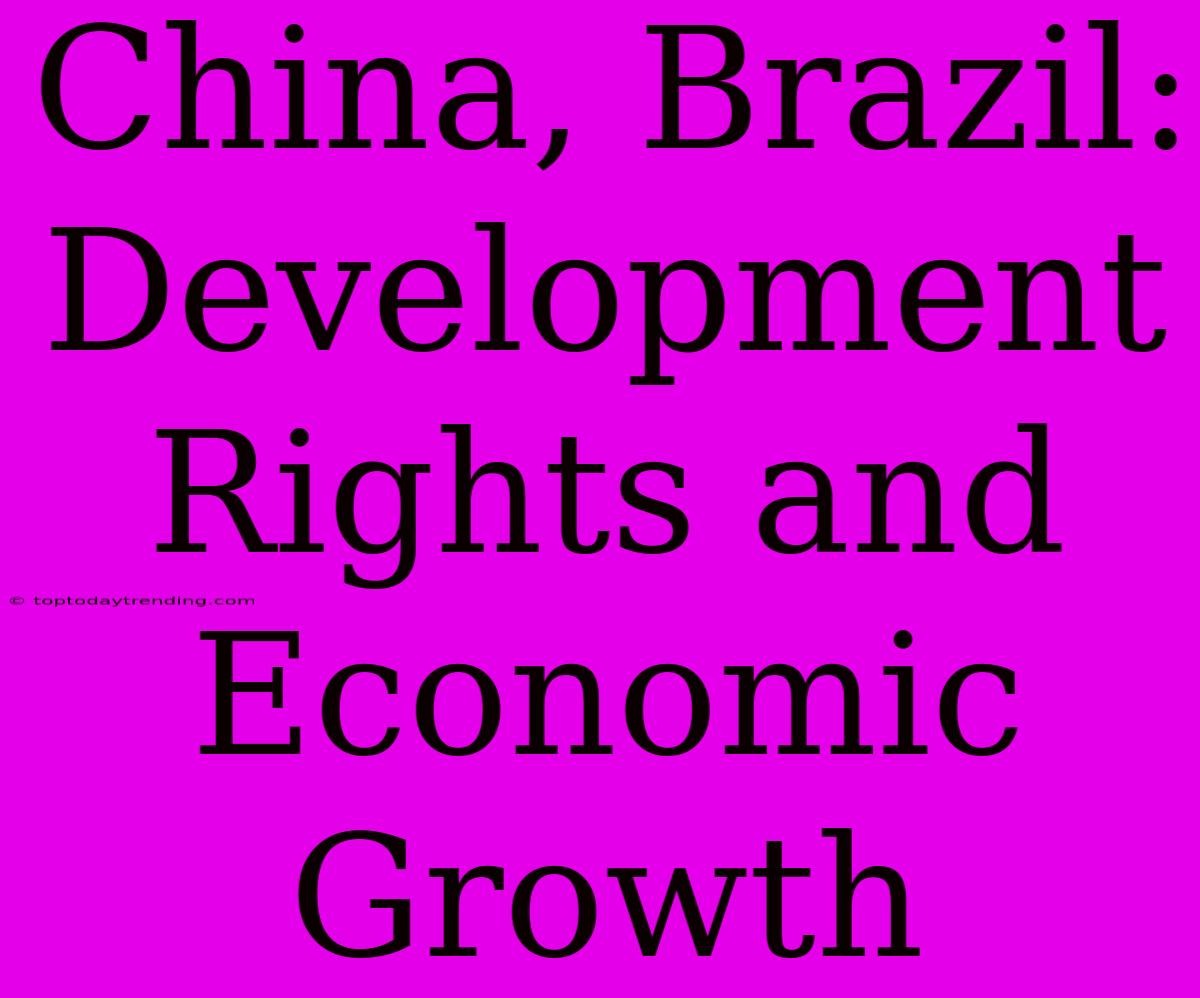China, Brazil: Development Rights and Economic Growth
The quest for economic growth and development is a universal aspiration, often pursued through various strategies. Two of the most prominent examples are China and Brazil, both nations with vast resources and ambitions to become global players. While their paths to development have differed, both have employed a combination of economic reforms, infrastructure investment, and social programs, with varying degrees of success. However, the role of development rights, particularly in relation to environmental sustainability and social equity, has become increasingly crucial in assessing their long-term growth prospects.
China: The Rise of the Dragon
China's economic miracle is undeniably impressive. From the late 1970s, they implemented market-oriented reforms that spurred phenomenal growth, lifting millions out of poverty. This growth has been driven by:
- Massive infrastructure development: High-speed rail networks, modern ports, and expanded energy grids have facilitated trade and connectivity.
- Investment in manufacturing and technology: China has become a global manufacturing hub, producing everything from consumer electronics to automobiles.
- Export-led growth: China has leveraged its low labor costs and efficient production to dominate global export markets.
However, this rapid growth has come at a cost:
- Environmental degradation: Uncontrolled industrialization has led to severe air and water pollution, climate change impacts, and depletion of natural resources.
- Social inequalities: While poverty has significantly reduced, disparities in income and access to opportunities persist, particularly in rural areas.
- Human rights concerns: Restrictions on freedom of speech and assembly, and the use of forced labor, have been widely criticized.
Brazil: The Potential of a Giant
Brazil, with its rich natural resources and diverse population, holds significant potential for economic growth. Their development efforts have focused on:
- Expanding agricultural production: Brazil is a major producer of commodities like soy, coffee, and sugar, driving significant economic activity.
- Developing its vast energy resources: From hydroelectric power to biofuels, Brazil aims to be a leader in renewable energy.
- Strengthening its manufacturing sector: Investments in industries like aerospace and automotive are contributing to a more diversified economy.
However, Brazil faces challenges:
- Income inequality: Brazil has a high Gini coefficient, indicating a significant gap between the rich and poor.
- Corruption and political instability: Corruption scandals and political turmoil have hampered economic progress and public trust.
- Environmental challenges: Deforestation, pollution, and unsustainable agricultural practices threaten biodiversity and climate stability.
Development Rights: A Key to Sustainable Growth
Both China and Brazil are grappling with the trade-offs between economic growth and sustainable development. This is where the concept of development rights gains relevance:
- Environmental rights: The right to a clean and healthy environment is fundamental to sustainable development. This includes safeguarding ecosystems, protecting biodiversity, and mitigating climate change.
- Social rights: The right to decent work, housing, education, healthcare, and social protection are essential for ensuring equity and reducing poverty.
- Economic rights: The right to participate in economic activities, access resources, and benefit from development is crucial for promoting inclusive growth.
Future Directions: Balancing Growth and Sustainability
Both countries have taken steps to incorporate development rights into their policies. China has implemented environmental protection policies and social safety nets, while Brazil has adopted sustainable development goals and social programs aimed at reducing poverty and inequality.
However, further progress is needed:
- Stronger regulatory frameworks to enforce environmental and social standards.
- Increased transparency and accountability in government and corporate practices.
- Greater participation of civil society in decision-making processes.
- Investments in sustainable technologies and green infrastructure.
The future of China and Brazil will depend on their ability to balance economic growth with the protection of development rights. This means adopting a holistic approach to development that prioritizes long-term sustainability, social equity, and environmental stewardship. Their success or failure will have significant implications not only for their own populations but also for the global community.

